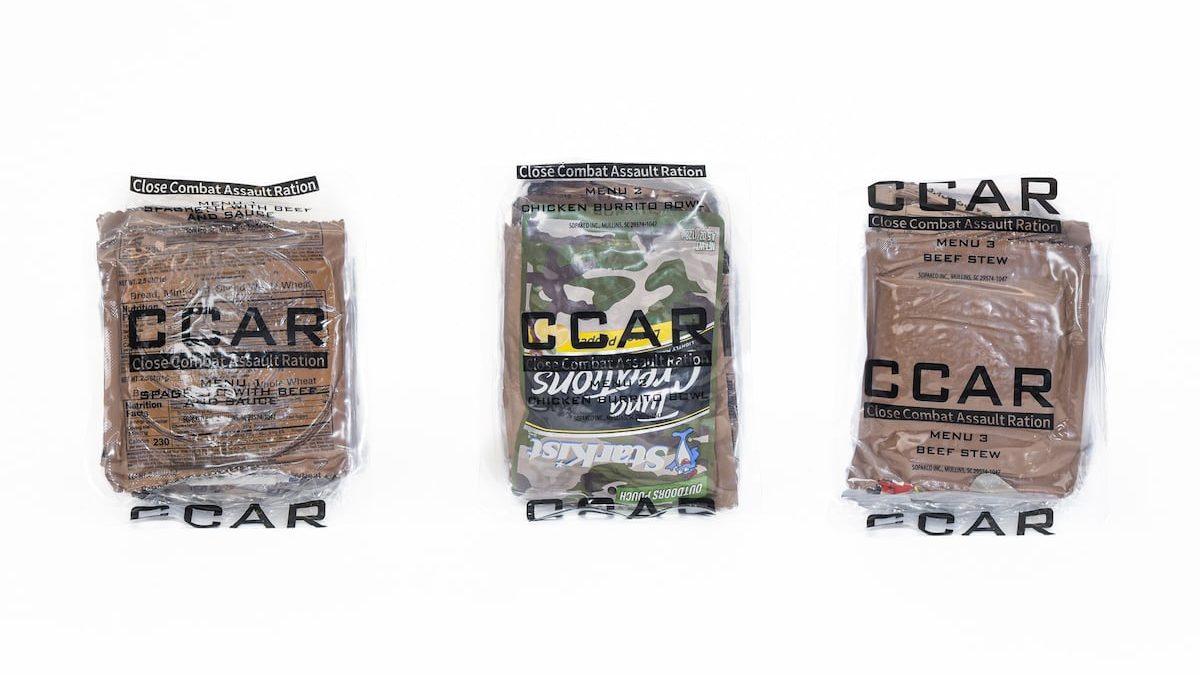A slimmed-down, more nutrient-dense, individual field ration is now available for order for all troops.
The Close Combat Assault Ration, or CCAR, has been under development by the Army Combat Capabilities Development Command since 2019.
The Army designed the ration to support small units during operations in austere environments where they needed to self-sustain for 7 to 10 days with limited or no resupply, according to an Army release.
The standard Meal, Ready to Eat and the First Strike Ration were too large and bulky to meet the need.
The CCAR will replace the First Strike Ration and has a 39% reduction in volume and a 17% reduction in weight. That means a soldier can carry five days’ worth of nutrition in a three-day footprint.
Initially, developers considered packaging nutrient-dense bars, but they scrapped that idea after gaining feedback from service members.
Developers solicited feedback in 2019 from 10th Special Forces Group at Fort Carson, Colorado; the 10th Mountain Division in Fort Drum, New York; and 2nd Reconnaissance Battalion, 2nd Marine Division at Camp Lejeune, North Carolina.
Though weight and volume reductions were key considerations for the new ration, user acceptance and nutrition were also critical factors.
“We have a long-standing saying in the food world that it’s not nutrition if it’s not eaten,” Erin Gaffney-Stomberg, chief of the Combat Feeding Division, said in the Army release. “It’s critical that optimal nutrition is supplied to warfighters when and where they need it, and in a form that looks, smells and tastes good and is safe.
“In addition, we need to have science demonstrating how these rations impact warfighter performance.”
Studies indicated that soldiers eating the CCAR consumed more calories and experienced smaller energy deficits compared to those consuming the First Strike Ration in operationally relevant field training.
That’s attributed to the increased energy density in the CCAR, according to the release.
According to James McClung, Military Nutrition Division chief, “negative energy balance, or the inability to consume enough calories to meet metabolic demands, is a threat to warfighter performance.”
“Importantly, studies demonstrated that the CCAR did not adversely affect physical performance,” McClung said in the release. “As the Army and DOD continue to seek ways to optimize warfighter performance and lethality, evidence indicates that the CCAR is a promising option for short-term missions where it is crucial to minimize the logistical burden while maximizing energy intake and maintaining Warfighter performance.”
Todd South has written about crime, courts, government and the military for multiple publications since 2004 and was named a 2014 Pulitzer finalist for a co-written project on witness intimidation. Todd is a Marine veteran of the Iraq War.
Read the full article here


